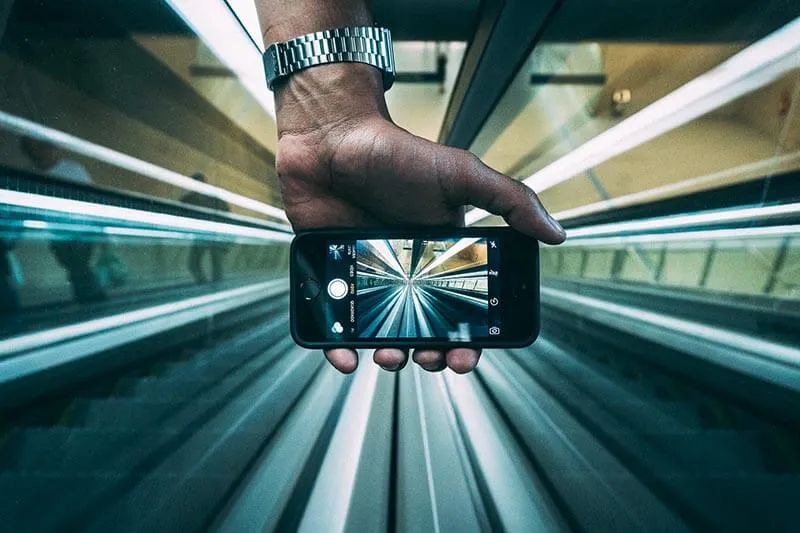Manage Customer Expectations for the Digital Transformation

Table of Contents
The Digital Transformation Landscape
We all know businesses must innovate to keep up with customer expectations.
From food companies reducing sodium in TV dinners for the health-conscious, to car manufacturers producing electric vehicles for the environmentally conscious, companies in every industry are required to keep up with maturing markets, new trends, and evolved customer expectations.
The tech industry is no stranger to this shift, and is currently experiencing an accelerated digitization.
Technological achievements are facilitating a change in how companies approach their customer experience, allowing customers to respond with even higher expectations.

This digital transformation has given companies the resources to supply instantaneous communication, seamless cross-channel support, unique customer journeys, and a higher degree of transparency to their customers. Today, these technological advances set the standard and are expected by today’s “digital customer”.
Companies must understand how customer expectations have evolved in the digital transformation, and why they require a new approach to the customer experience.
If businesses wish to fine-tune their customer experience with the resources provided to them by the digital transformation, they must first understand this new clientele.
That’s why today marks the start of a new relationship you’ll build with your customers. And, surprise! Right now is your very first date…
Digital Customer, meet my audience. Audience, meet your new market. Enjoy!
The New Digital Customer
Customers in today’s market have high expectations and, if your company can’t satisfy them, they’ll churn and move on to the next company that can.
When discussing this new customer, we should first think of ourselves.
What do we expect in daily transactions?
When I purchase an app, for instance, I expect to access it anywhere, anytime, and instantaneously.

I also understand the benefits of technology, and require a high level of transparency from companies. Would you welcome the wrath Zuckerberg and Facebook have faced in the wake of the most recent data collection scandal?
I expect to achieve my goals with exactness and ease. My confusion shouldn’t increase, rather the app should solve my concerns with minimal effort.
I am a digital customer, and I’m going to take a wild guess and say that you are too. We expect our relationships with products to be personalized, accessible, and easy to understand.
This is why companies must evolve and refocus their design efforts to meet new customer expectations. Designing a “one size fits most” experience will no longer delight the digital customer.
Companies are now required to design many experiences for one, single product.
When designing multiple journeys, personalization is the most important. Here’s how it has emerged through the digital transformation, and the role in plays in customer expectations today.
Personalization
75% of customers admit being more likely to buy from a company that recognizes them by their name, knows their purchase history, and recommends products based on their past purchases.

Customers enjoy personalized journeys, and the digital transformation has made them easier for companies to achieve. Companies now interact with customers through many channels, from mobile to social, and should make sure their customer is personally recognized at all times. You can achieve this with the following three methods.
1. Inform the Customer
New digital channels should be clearly explained to users. If your company starts to use social media to respond to concerns, make sure customers are first made aware that this outlet exists. If your company now uses an app along with a website, make sure this new channel doesn’t interfere with the former.
You should also explain the specific need for each digital channel you introduce to customers. HSBC, for example, provides tutorial videos on its redesigned online banking.
The gym I attend is famous for using digital channels throughout its premises to inform customers.
Classes are held by interactive, pre-recorded sessions and led by real trainers. Before you enter the training room, you can tap through an interactive screen that describes and explains what each lesson will be.
The gym also uses social media and hashtags to feature dedicated gym-goers on TV screens throughout their gyms. This personalization is brought on through newly introduced digital media channels, and customers feel special when they get a shout out.
2. Provide a Relevant Customer Journey
Thanks to the digital transformation, we can exclaim “there’s an app for that!” to most of our digital dilemmas. Because of this, it’s important you make sure to present only the most relevant content to your customers. Don’t overload them with unnecessary features, content, information, and apps.
When tailoring the customer journey to meet customer expectations, you may introduce an email automation system that will schedule emails. You should pay keen attention to what channel the customer comes from, what resources they’ve viewed, and what information they seek. This way you can construct a journey specifically tailored to their interests and needs.
Allianz did this when they decided to group the functionalities of multiple apps into one app for health-insurance, claims submission, and other services. This singular app generated a higher usage from their customers, simply because of the convenience and relevance.
3. Guide the Customer
Customers expect to easily navigate your software and if they can’t, they’ll abandon your platform.
This is why onboarding customers with guidance is instrumental to meet growing expectations for accessibility and know-how. You can use userlanes that guide users through your software with interactive steps and virtual assistant.
You can also provide incentives to your customers to adopt digital guidance in favor of traditional and more costly measures. The airline Wizz Air actually offers digital support on its website for free, but charge a fee for customers who decide to use the call center instead.
After focusing on personalizing you efforts to meet customer expectations, you should consider how the digital customer now expects to achieve instant results.
Instant Gratification
Because of digitization, customers now expect to achieve their goals instantly. They also expect to access your platform from anywhere, at anytime.
You can create the optimal customer experience that adheres to customer expectations in the digital age through gamification efforts and incentives.

The language learning app, Duolingo, creates a customer journey that incentivises the user and can be accessed on multiple platforms.
An eager user may hope achieve fluency in a language in a week. Obviously, this isn’t realistic. Duolingo instead rewards the user with milestones measured as a percentage of fluency for the language. For instance, I’m currently 66% percent fluent in German and 12% fluent in Spanish! Although I haven’t achieved complete competence, this is an achievement I’m proud of and encourages me to return to the app.
Duolingo is also available by mobile and desktop. This way, it doesn’t matter if I want to practice the language on my train ride to work or if I want to complete a lesson at my desk. Either way, I can achieve my goal instantly.
Now that you’ve secured your customer’s achievements, let’s make sure the entire company makes this their goal too!
Enterprise-Wide Approach
Using the digital transformation to construct a better customer experience is not just a matter for direct, front-end communication channels. The entire company should play a role in the customer experience.
Every department in a company should work towards the goal of providing an empowering and seamless Customer Experience.
Customer expectations are higher than ever these days.
Now, customers expect their concerns addressed to customer success managers to be shared with the product team. Customers expect that the concerns shared with sales reps are addressed in the next product release.
The digital customer expects you to share information seamlessly and swiftly with all other departments.

Of course, this is not always possible. Workplace silos often keep departments from successfully working together and challenge any attempt at effective collaboration.
Any slight inconvenience the customer experiences along their journey within your product interface may translate into churn, negative associations, or a conversion to the competitor.
If your company’s departments are focused on too many goals with conflicting visions, your company is not approaching the customer experience form an enterprise- wide approach.
You can use digital channels to ensure the common goal every department works towards achieving is addressing customer expectations.
You can use a shared CRM tool to evaluate, gather, and share all correspondence departments have with clients, information about their purchase history, and insight on their behavior amongst the entire enterprise.
Customers expect every digital channel provided by a company to know specific details about themselves.
Clients shouldn’t have to repeat themselves to customer support managers, customer service agents, or sales teams. This interruption and repetition will develop negative sentiments during the customer journey and harm the overall customer experience.
Keeping it Human
It seems as companies start to supply more digital channels to their customers, customers start to expect an even more human experience.
You really have to appreciate the irony of the digital transformation!
As Bryan Kramer, TED Talk speaker and CEO at PureMatter, says:
“In rapid digital transformation, it’s vital that we don’t forget who we are. With the large customer data sets that brands are generating, they need to ensure that they use them in emotionally intelligent ways.”
Don’t be the company that provides a lack-luster, boiler plate customer experience.
Keep in mind that some of the benefits provided by the digital transformation may border the line of “creepy” for customers. A Hubspot study found that 91% of online users in the U.S. and Europe find advertising to have become more intrusive over the past two to three years.
There exists a fine line which separates a humanized customer journey that will meet the digital customer’s expectation, and the journey that creates a creepy bot effect, which will turn them away.
Your company should A/B test marketing targets, tactics, and channels to see how customers react and respond to these personalized measures. Find the level of detail that your audience is willing to share and use this information to provide a human touch in the customer experience.
Final Thoughts
The digital transformation has changed the type of customer experience clients come to expect in the B2B market. Today’s new digital customer requires a higher level of personalization, gratification, and human touch.
Customer success managers, SaaS founders, sales reps, and product teams are expected to meet these higher demands with the help of advanced technological tools. However, these advancements can complicate the customer experience if not used properly.
To ensure you can fulfill your customer’s expectations in the digital transformation, here are the main elements you must address in the customer experience:
- Personalization
- Inform the Customer
- Provide a Relevant Journey
- Guide the Customer
- Instant Gratification
- Enterprise-Wide Approach
- Keeping it Human
If you’re interested in learning more about the digital transformation and the steps required to satisfy customer expectations, download our free guide “The Road to Digital Disruption”.
You’ll receive information on the exact tools, best practices, and actionable measures top SaaS company use to achieve customer success.

